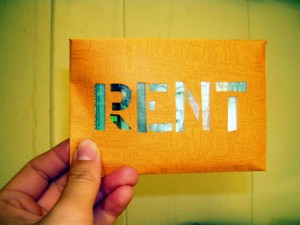multifamily budgeting
Apartment NSF Fees
Apartment Budget Installment
NSF or Non-Sufficient Funds Fees are not uncommon thing in the world today. In fact they have been around for a very long bit of time. Simply defined, it is a fee for a returned check be it paid by electronic or paper method.
NSF Amounts
The amount can be anything within reason. I have seen them range from $25 to $125 depending on average rent rates, markets and sub-market primers.
Reason for NSF
The chief reason in my head is to shape behavior. Not to penalize. Suffice it to say – if a resident has to add $125+/- to their rent check, they will likely not do it twice. It will likely feel like an excessive amount and thus a penalty but it will shape the behavior you are after.
How to Budget for NSF Fees
Where you have trailing historical numbers, you can simply take a 12 month trailing average and plug that number for the forward-looking 12 months. Where you have no information, you can look for like kind assets in the market do per unit comparisons to come up with your averages [something I will define with more detail in future articles].
I leave it at that this week. NSF Fees are fairly straight forward but I have left some nuggets out in hopes that we pick them up in the comments.
Publicly Calling Out
Speaking of – I am going to reduce to a lower means of influencing by publicly calling out a member of our accounting team. I will only identify her as CK for now and I hope that she joins the conversation at some point as it was her idea to get the budget series started.
Your enjoying the weather today multifamily maniac,
M
Share this:
Apartment Late Fees
 Apartment late fees are applied to a resident’s account if they pay rent beyond a pre-defined grace period. Generally grace periods do not extend beyond the first five days of any given month. And, apartment late fees are generally levied in an amount calculated as a percentage of the base rent and or as a flat fee.
Apartment late fees are applied to a resident’s account if they pay rent beyond a pre-defined grace period. Generally grace periods do not extend beyond the first five days of any given month. And, apartment late fees are generally levied in an amount calculated as a percentage of the base rent and or as a flat fee.
Due on First Late on Second
Now technically rent is always due on the first of any given month. Despite what your grace period is rent is due on the first of the month and late on the second. That does not mean that you are applying your late fee but it does mean that rent collection procedures should be in motion on the second day of every month. You are building habits here and this is a good one to master.
A Word On Grace
I am a strong advocate for doing away with grace periods all together. I have never understood the appeal to use them. To me, it suggests that it is okay to pay late . Why would you do such a disservice to your respective business? Moreover, you have entered a binding contract and have agreed to provide some level of value in exchange for the monthly payment that will be made to you. So, in my head, you should ask for it on the first. And, define it as late on the second whereby you apply late fees.
Apartment Late Fees
I have seen several variations of late fee calculations. Presupposing rent is due on the first and late fees apply on the fourth – here are a few examples:
1. $50 on the fourth and $5 per day every day after until it is paid in full
2. $75 on the fourth. Another $75 on the tenth.
3. 10% on the fourth and $5 per day every day after until it is paid in full
That is just to name a few – there are very obviously hundreds of computations out there. The main point with penalties is behavior modification. Make the pain certain enough and people will very likely deviate away from it. Make it marginal and people will take advantage of it. Remember – for most of you there is a mortgage that has to be sufficed each month.
Your – advocating for no grace period – multifamily maniac,
M
Pic prop: flickr
Share this:
Apartment Budgets: Rental Income
The Numbers
It all comes down to the numbers. Be it an operational spend or a big capital spend, it all comes back to a math problem to be considered and or solved. At that and the prompting of one of our accounting team members at Mills Properties, I will be dedicating Tuesday to the numbers.
Walking Through an Apartment Budget Top to Bottom
We are going to take apart one of our budgets by defining each and every line item, one at a time, over the next year or so. Yes, we really have that many line items. The thought is that over time we will, as a group, gain a very deep and thoughtful understanding of the line item definitions, relationships and things that drive each. We will learn tips and strategies to move income and expenses in the right directions.
Speaking Greek
 Full admission – numbers are not my favorite part of the multifamily business. I can do it. I understand the relationships. And, I know how to move them in the right directions. But, as much as I try, I am just not the analytic left brain thinker. I am as far from pragmatic and methodical as you can get. I am a right brain thinker, creative in nature and never like to do the same thing the same way twice. Numbers are the work side for me.
Full admission – numbers are not my favorite part of the multifamily business. I can do it. I understand the relationships. And, I know how to move them in the right directions. But, as much as I try, I am just not the analytic left brain thinker. I am as far from pragmatic and methodical as you can get. I am a right brain thinker, creative in nature and never like to do the same thing the same way twice. Numbers are the work side for me.
I say all that to say this, this will be as much an education for me as it will hopefully be for you. So, comment away. Call me on the carpet when I am off. Add to the conversation when you see fit. Do it under the premise that you will be helping tons of people get a confident understanding of our financial game plans.
Apartment Rental Income
Item of note: I am working from a non-revenue management model.
This is the top line. This is where it all starts. Some call it market rent, others call in the pixie dust sprinklers as the line is really meaningless.
Rental Income can be defined as the maximum rents at 100% occupancy. It’s the number you would collect if every single unit were physically occupied and everyone paid their rent at the full value of the lease.
Where do we derive the number? It really is made up. In all fairness it is predicated on your comps in the market place. We like to think of our comps as the three to five communities that you lose the most leases to. I like to think we make the market and the comps predicate their tops lines accordingly. Whatever the case, it’s a market generated number.
When does it change? It can move down but more often than not it moves up. It is predicated on a good number of factors to include broader things like the economy, jobs and household formations. Or more minutely on the classic supply and demand factors set inside of seasonality. And, it is down on a unit type basis. If you are very highly occupied in a specific unit type then you should raise. If you have tons of inventory with little to no demand – you keep the rents neutral. That last sentence might drive you to think you should lower rent. And, in some management companies that would be a true statement. For us, we leave it in place and compete with concession – which we will discuss in a future post.
What is the fastest way to move this line item up-up-up? By being remarkable.
Perspectives
I have left a number of perpectives out of this post and maybe treaded on others – please keep the discussion going in the comments section below. My accounting friends will love you for it and I will thank you for the education.
Your, digging into apartment budgets, multifamily maniac,
M
Share this:
#apartmentbudgeting: Shop the Comps
Just another quick tip before you kick off another season of multifamily budgeting
Shop your comps – not for the reason of selling to meet their level of product or service but rather as a way of discovering ways to sell beyond their offerings.
Your budget should reflect not what it takes to compete but rather what it takes to crush. Or, what it takes to create a completely different experience for people to fall in love with.
Happy budgeting…

